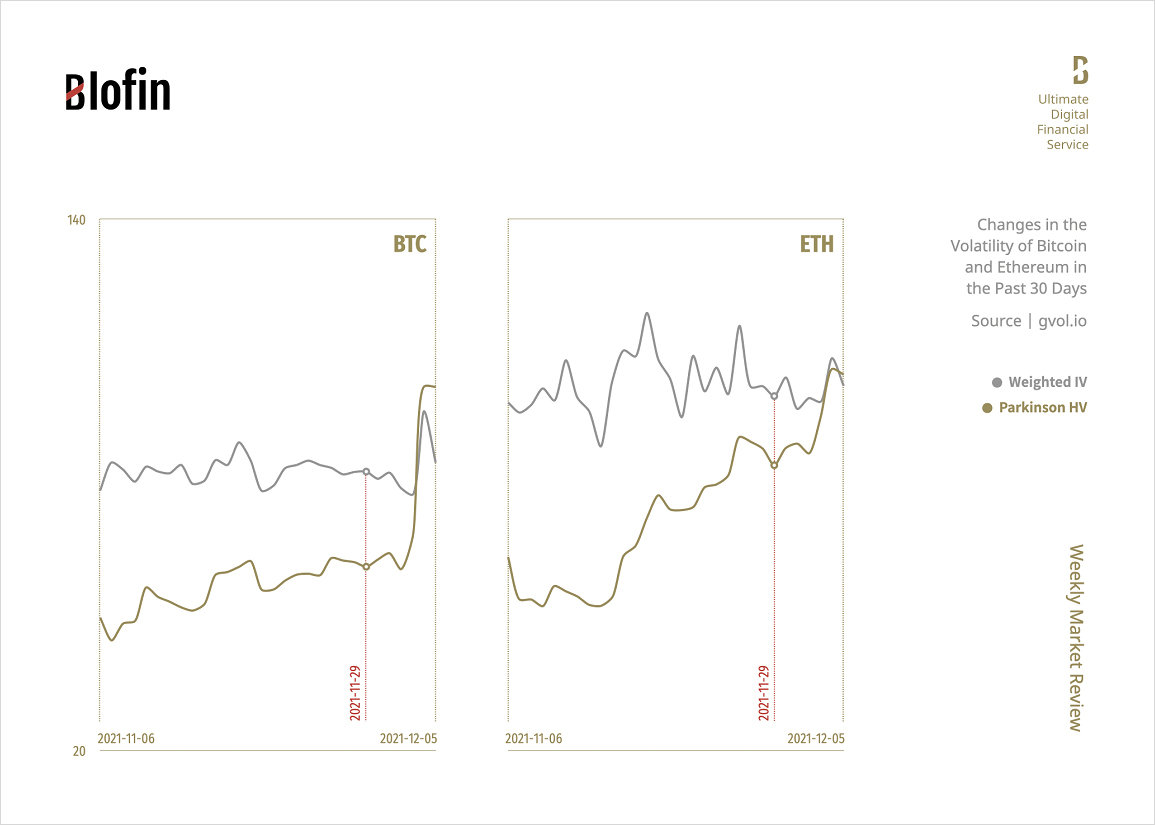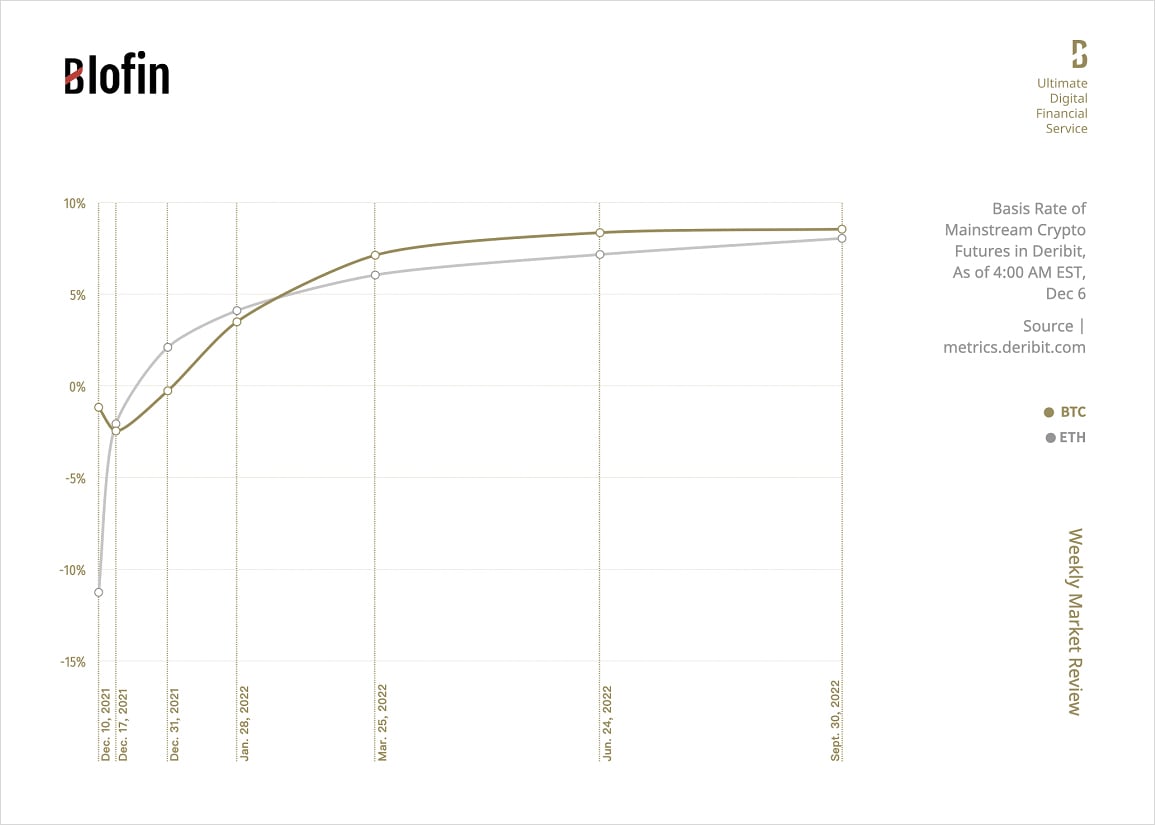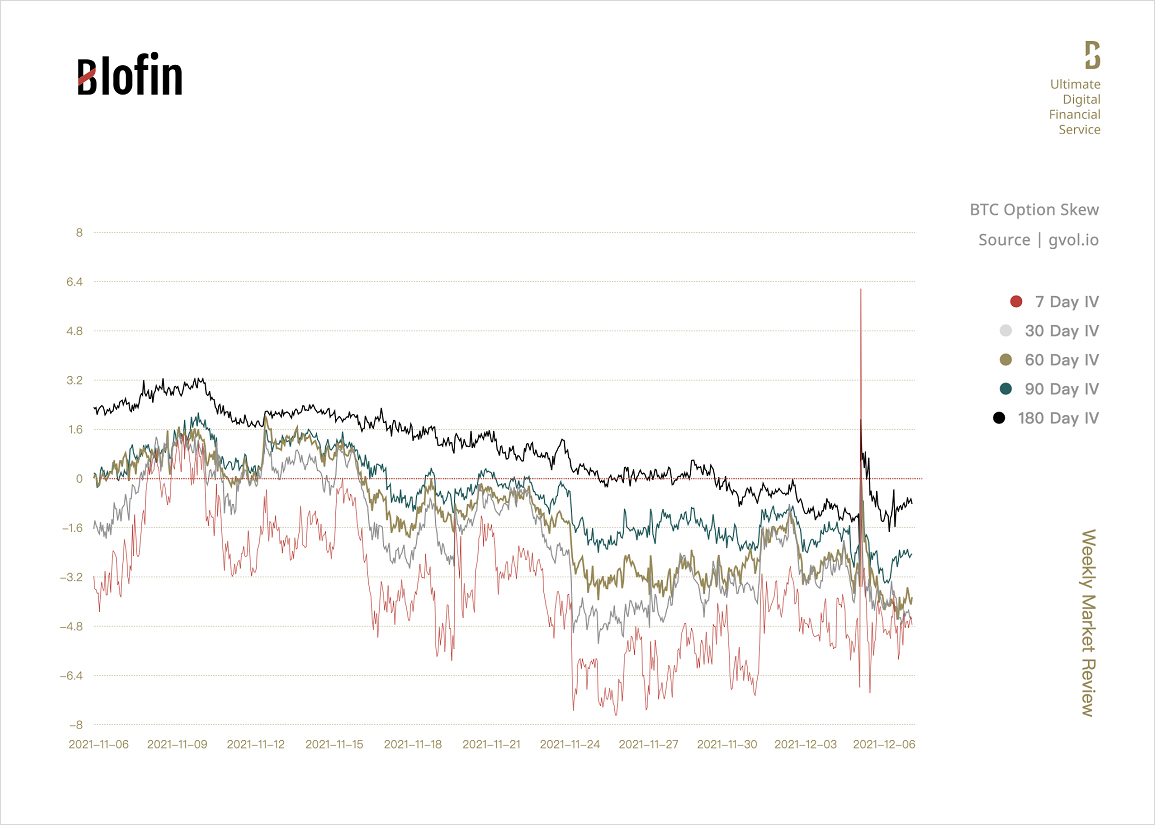
Last Saturday, the crypto market plummeted. The whole market cap evaporated by more than $500B in a short time. Mainstream cryptos all fell by more than 20% at one time.
The large-scale selling of risky assets triggered by investors’ worries about the hawkish attitude of the Federal Reserve and the poor performance of U.S. stocks may be an important reason for this week’s decline.
The market is gradually stabilizing as investors gradually include the Fed’s expectation of accelerating debt reduction and raising interest rates in advance in pricing. However, before the FOMC resolution is announced, under the influence of the resurgence of the epidemic, market volatility may still be at a high level due to the uncertainty.
“First Plunge in 6 Months”
Although the crypto market has always been famous for its high risks, a 20% drop in the short term is relatively rare, and even less occurs on weekends like last week. In 24 hours, mainstream crypto prices fell by more than 20%, with BTC once falling from about $57,000 to $42,000. Market volatility also soared after a brief decline, with the volatility of mainstream cryptos exceeding the 100 mark for the first time since June 2021. The positive difference of volatility also means that the performance of cryptos has begun to change significantly.

This decline is closely related to the intensive statements made by the Federal Reserve last week. A series of economic data shows that the employment recovery in the US was relatively satisfactory in Nov, while the unemployment rate was further lower than in Oct. This provides sufficient confidence for the Federal Reserve to take a series of measures against high inflation.
Starting from Tuesday, officials led by Federal Reserve Chairman Powell have made intensive statements on accelerating debt reduction and raising interest rates ahead of schedule. Among them, Powell’s statement is the most important: the statement of “temporary inflation” has been abandoned, while high inflation has become a problem, and raising interest rates ahead of schedule has entered the scope of consideration.
This is not good news for crypto bulls. Judging from the options market, the option skewness continued to decline last week, and pessimism even penetrated the forward options market.

Although crypto bulls have been insisting since last Monday, neither the new epidemic nor the non-agricultural data that far missed expectations affected the Federal Reserve’s determination to speed up debt reduction and raise interest rates in advance, eventually triggering a crash. Large-scale spot selling of cryptos has subsequently triggered large-scale liquidation in the derivatives market. In 24 hours, the scale of liquidation has already reached $2.587b in perpetual contracts alone.
Looking from the futures market, the futures term structure has recently collapsed significantly, with BTC futures due on Dec 10 showing a negative premium of nearly -10%, while ETH futures in the front month have all term premiums close to 0%. For forward futures, the premium also fell from about 10% to 8%. There is no doubt that market confidence has been hit hard.

“So, What’s Next?”
At present, major Wall Street institutions have expected the Fed FOMC resolution in December.
Jan Hatzius, the chief economist at Goldman Sachs, said in the research paper that he continues to expect the FOMC to double the speed of Taper at its Dec meeting (this year), and then start raising interest rates for the first time in June 2022.
Because the seasonal adjustment factors in Nov may be distorted, the “Nov salary survey response rate is the lowest in 13 years” in the non-farm employment report, so the household survey will be more important, and the household survey results are very strong. The number of employees in the survey increased by 1.1 million, and the labor force participation rate increased by 0.2 percentage points to 61.8% month-on-month.
Citi economists Isfar Munir and Andrew Hollenhorst pointed out in a research note that given Powell’s more hawkish speech this week than expected, they now expect the Federal Reserve to reduce the pace of asset purchases at twice the pace announced in November. It is expected that starting from January, the rate of downsizing will be $30b per month ($20b US Treasuries and $10 b MBS) and will end in Mar 2022, which is 1 month faster than the previous expectations. They continue to expect the Federal Reserve to start raising interest rates in June.
Next week, central banks’ statements under the hawkish attitude of the Federal Reserve will become the focus. Starting from Tuesday, the central banks of India, Australia, Canada, Brazil, and other countries will announce interest rate resolutions. Under the background that the Federal Reserve accelerates the process of recovering liquidity, interest rate changes in emerging economies and the Commonwealth market will become the key factor for the market to speculate on the FOMC resolution of the Federal Reserve in mid-Dec.
In addition, U.S. Nov CPI data will be released on Friday and is expected to be higher than last month. Still, high inflation may only spur the Fed to act faster. However, for investors, the demand for anti-inflation may rise again and overlap with the epidemic, bringing more uncertainty to the crypto market.
To sum up, due to the increase in overall uncertainty, market volatility is likely to continue to rise. However, as the crypto market stabilizes, anti-inflation demand is still supporting the lower limit of cryptos. However, the Federal Reserve is gradually lowering the upper limit, and the bull market peaks in October and November may be difficult to reach.
AUTHOR(S)

